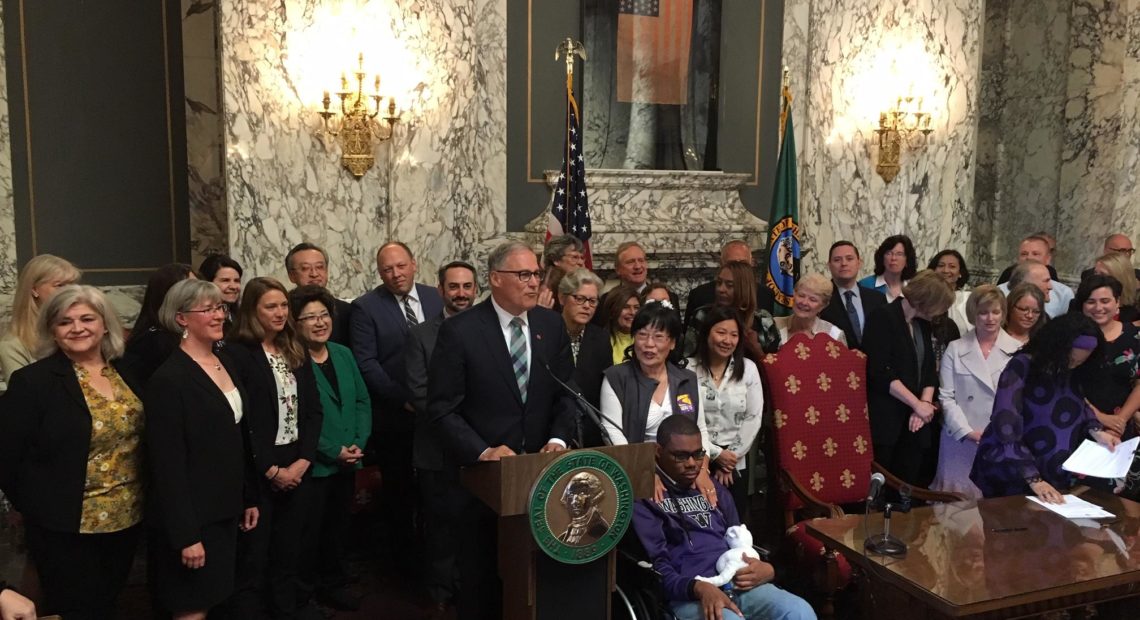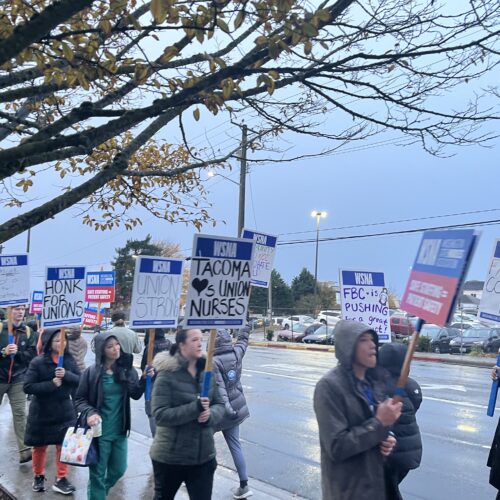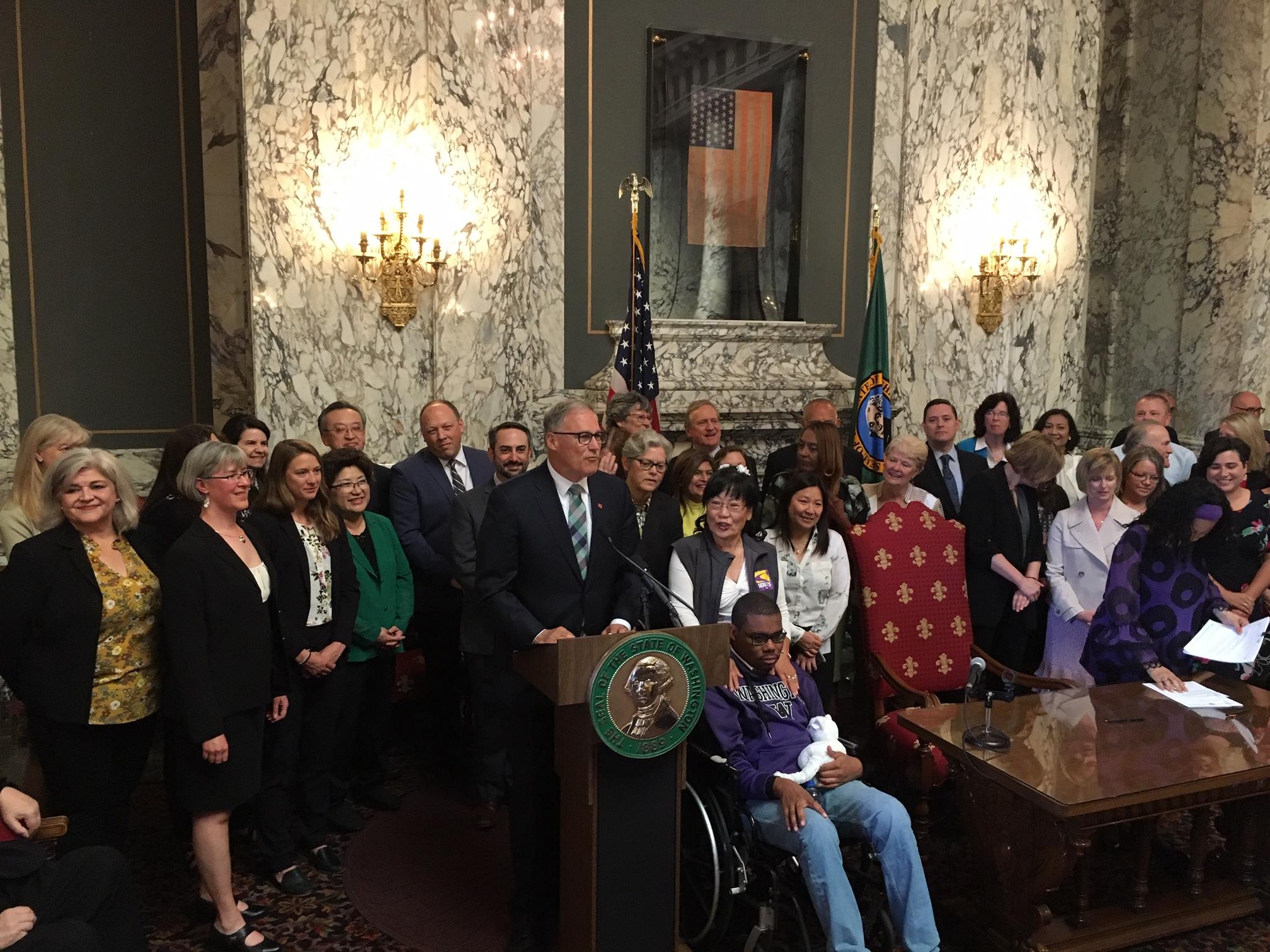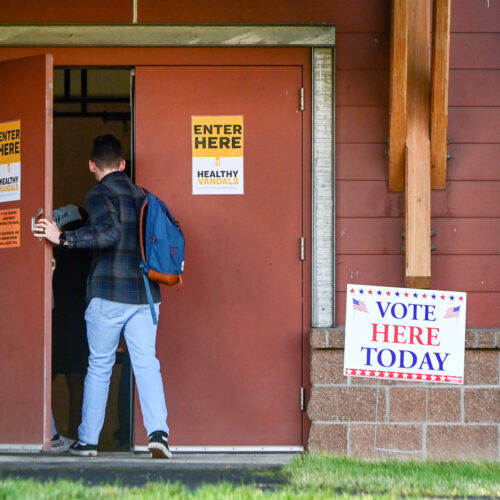
Will Washington State’s New Public Option Plan Reduce Health Care Costs?
READ ON
Millions of Americans who buy individual health insurance, and don’t qualify for a federal subsidy, have been hit with sticker shock in recent years. Instability and uncertainty in the individual market — driven in part by changes Congress and the Trump administration made to the Affordable Care Act — have resulted in double-digit premium increases.
Now Washington state has passed a law designed to give consumers another choice: a new, “public option” health insurance plan that, in theory, will be cheaper.
Washington Gov. Jay Inslee, a Democrat who’s running for president, signed the measure into law on Monday.
“Washington state is leading the nation in a brighter way to provide for the health and security of our families,” Inslee said at a bill signing ceremony in the state Capitol in Olympia.
Talk of a public option has been around since before passage of the Affordable Care Act. Generally, the idea is for the government to create a health insurance program to compete with the private marketplace, one that, unlike Medicaid and Medicare, would be available to all.
Washington’s embrace of a public option comes as Democratic candidates for president are talking about “Medicare for All” proposals and some states are considering letting people buy in to Medicaid. Washington is thought to be the first state law to authorize the creation of a public insurance plan of this type.
But is Washington’s approach to individual health care a true public option?
“It depends on how you define a public option,” says Jennifer Tolbert, director of state health reform at the Kaiser Family Foundation.
Under Washington’s approach, called Cascade Care, the state will not get into the insurance business. Instead, Washington is creating more of a hybrid public-private system where the state will contract with private health insurers to administer the plans, but will control the terms to manage costs. In that sense, says Tolbert, what Washington is creating could be called a state-sponsored plan.
Still, Tolbert says, it’s not yet clear how much of a game changer Washington’s new health insurance law will be.
“I think we have to wait and see,” she says.
Washington state, Tolbert notes, has a history of leading the way on health care by seeking innovative approaches to expand coverage and ensure affordability.
But she also has a reality check for consumers regarding the new Washington law.
“It will likely be a lower-cost option, but [it’s] unlikely to be a dramatic savings over what people are paying today, more likely a modest savings,” Tolbert says.
Even sponsors of the legislation acknowledge the state plans may save consumers only 5-10% on their premiums.
Democratic state Rep. Eileen Cody, who sponsored the House version of the public option bill in Washington, says that given the climate of rising costs, it’s less about bringing prices down than about holding the line on premium increases.
“What we’re hoping is the rate that you pay today is what you’ll pay when this comes on the market,” Cody says.
How It Works
Here’s how Washington’s new law is intended to work.
Starting in 2021, consumers seeking individual coverage will have the option to buy a state-sponsored plan on the Health Benefit Exchange, the state’s online insurance marketplace. To keep premium and deductible costs down, the new plans will cap total provider and facility reimbursement rates at 160% of Medicare.
That cap is the keystone of the new law.
“It’s the first time that anybody has put a rate cap on a plan and tried to make sure that those people who are buying insurance don’t have to pay so much,” says Cody.
Another feature of the new law may give consumers some relief from other, out-of-pocket expenses. By 2021, the exchange will create standardized health plans with the goal of lowering deductibles and copays.
The creation of the Cascade Care program, at the request of Gov. Inslee, follows years of volatility and steep premium increases in Washington’s individual health insurance market.
Washington state officials say the individual insurance market has been buffeted by a series of actions by the Trump administration and Congress. These include the end of federal reinsurance and cost-sharing payments, as well as the suspension of penalties for individuals who don’t buy coverage.
“It’s been a triple whammy that’s created this bow wave effect in terms of premium increases year-over-year,” says Pam MacEwan, CEO of the Washington Health Benefit Exchange.
This year, the state’s insurance commissioner approved an average premium increase of 13.8% for plans sold inside the exchange. In 2018, the average rate increase was 36%, a spike attributed in part to President Trump’s decision to stop funding cost-sharing reduction assistance.
As premiums have gone up, enrollments have dropped. Between 2018 and 2019, more than 13,000 people left the individual market, according to data provided by Washington’s exchange. Today, about 200,000 Washington residents buy their insurance individually.
“Bare Counties” Have Been An Issue
Besides affordability, another challenge has been getting insurance companies to offer a choice of plans in all 39 Washington counties. Currently 14 counties offer only one individual health insurance plan option on the exchange. In previous years, the state has scrambled to find even a single carrier to provide coverage in some rural counties and avoid what are known as “bare counties.”
The goal of the legislation is to offer public option plans in all 39 counties. But participation by health insurers in Cascade Care will be voluntary, and there’s no requirement that they offer statewide coverage.
Democrats, who are the majority in the Washington legislature, embraced the public option this year as a way to increase offerings on the exchange without scaling back required benefits or requiring additional state spending on health care.
“This is going to lower premiums, it’s going to have better [out-of-pocket costs] and Washingtonians will be much better off for it,” said the bill’s prime sponsor, Democratic state Sen. David Frockt of Seattle, on the floor of the state Senate last month.
Republicans in the state legislature opposed Cascade Care and warned of potential unintended consequences.
“We worry that this could distort the market,” said state Sen. Steve O’Ban, the ranking Republican on the Senate’s Health and Long Term Care Committee.
O’Ban raised the specter that doctors might drop Medicaid patients “to make it work financially to participate in this plan with the lower reimbursement rates.”
Under Cascade Care, the state will not subsidize or help cover the cost of premiums beyond federal subsidies that are already available on the exchange based on income levels. However, the new law requires the exchange to study the feasibility of offering state-level subsidies in the future.
“We think initially the consumers that will be most interested in purchasing these plans will be those who don’t qualify for subsidies and who are paying the full cost of health care out of their pocket,” MacEwan said.
Washington isn’t alone in pursuing a public or state-sponsored health insurance option. Last month, Colorado lawmakers approved legislation directing state agencies to develop a proposal for a public health coverage option. Other states, including Connecticut, are also considering public option legislation.
This story was first published on NPR.org
Copyright 2019 Northwest News Network
Related Stories:

Nurses at St. Joseph in Tacoma seek staffing, safety changes
After their contract ended on Halloween, nurses at Tacoma’s St. Joseph Medical Center spent a rainy Friday morning picketing outside the hospital.
The nurses’ union, Washington State Nurses Association or WSNA, has been negotiating with hospital management since August. But Pamela Chandran, director of legal affairs for the union, said there are sticking points.

Whitman County reports two cases of pertussis
Pertussis, or whooping cough, is circulating across Washington, with two cases reported in the student population at Washington State University on Tuesday.

Health district secures grant funds, distributes response survey after Lineage warehouse fire
Fire crews spray water on rubble at the Lineage Logistics fire in Finley, Washington. The fire started on April 21. (Credit: Benton County Fire District 1) watch Listen (Runtime 1:08)
















